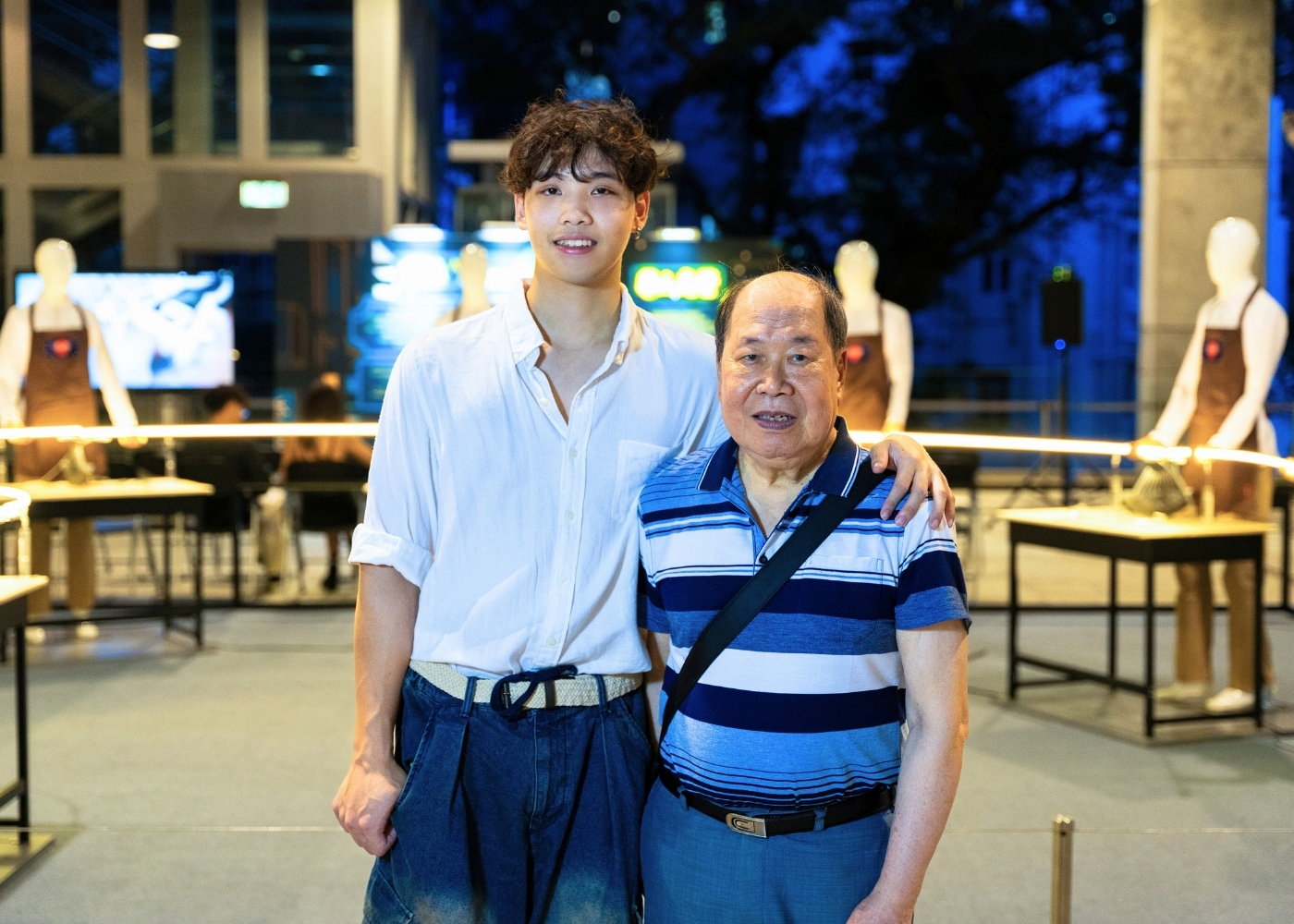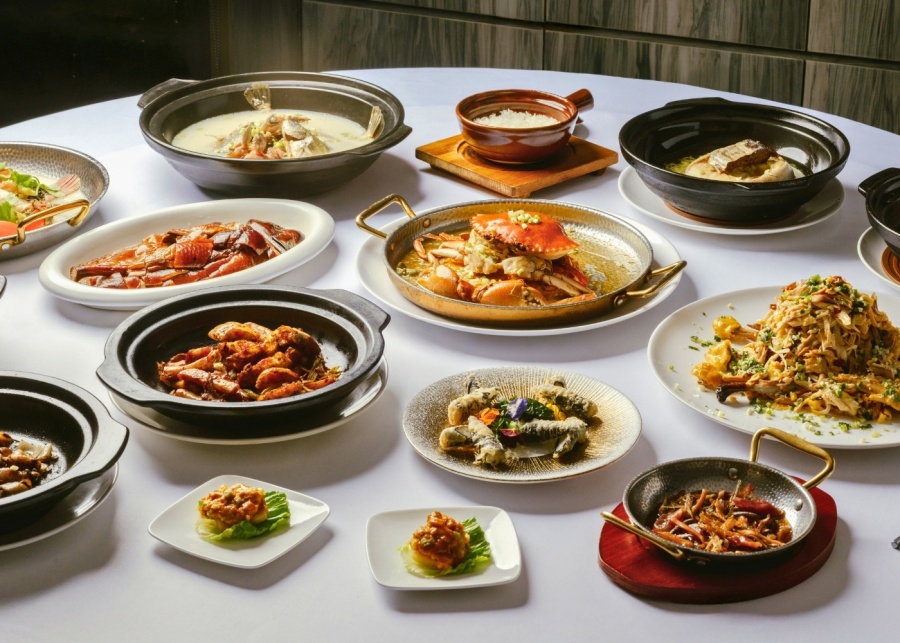
Join me in learning about the distinctive cuisine of Hong Kong’s indigenous Tanka people, where freshness, seasonality, and innovation reigns.
Most known for the fiery, spicy flavours of its typhoon shelter-style dishes, the slightly misunderstood Tanka cuisine hides a much gentler side. Sadly for us, it’s getting harder to find Tanka spots in Hong Kong that offer a well-rounded taste of the cuisine, with many in the community having retired their boats and fishing nets for brighter prospects on land. Thankfully, there remains one establishment that stands strong in Shau Kei Wan, garnering a loyal following from locals for over three decades with the generational family recipes of Hong Kong’s indigenous “boat-people.” This neighbourhood gem is Kam Tung Kitchen.
From the glistening waters of Clear Water Bay, Chef Po Yau Fai (布有輝) and his wife Chef Ada Kwok Yin Lai (郭賢麗) turn familiar and unpredictable flavours of the ocean into the exquisite signature dishes on the menu of Kam Tung Kitchen. To celebrate the 35th birthday of this Hong Kong culinary icon, we sit down with Chef Fai, Chef Ada, and their son Marco Po to learn about Kam Tung Kitchen’s history, the life and living culture of Hong Kong’s boat community, and the magic behind Tanka gastronomy.
The story behind Kam Tung Kitchen’s authentic Tanka cuisine
Nature, seasonality, and freedom: Life as Tanka
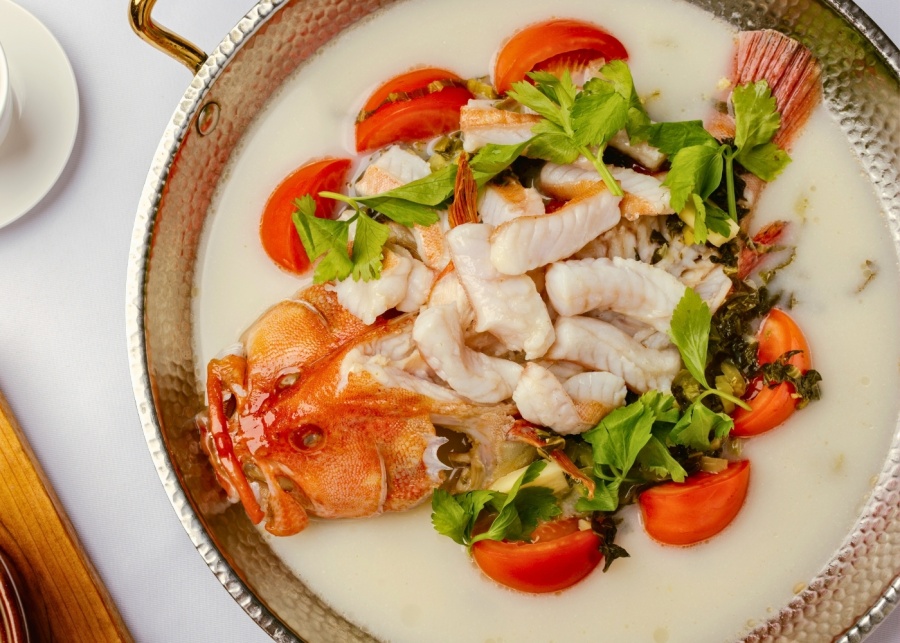
Chef Fai’s culinary journey began in Po Toi O, Sai Kung, where he spent his childhood on the pristine waters of Clearwater Bay. “When I was about eight or nine, I started joining my relatives to fish out at sea,” says Chef Fai. “During summer, we would scavenge for food at the camping and barbecue sites around Clearwater Bay. During winter, we would forage for produce in the mountains and dig for oysters along the coast,” Chef Fai reminisces with a smile. “That’s the way of life for kids – knowing what the ocean holds for which season.”
The Tanka Pos have called Clearwater Bay their home for generations, but Chef Fai’s saw the gradual retirement of Boat Houses and relocation on land. “The lineage head for Tankas is the paternal grandfather,” explains Chef Fai. “And we would ‘split the family’ when the grandfather dies. I was born seven days after my grandfather’s death. So, when I was young, we’d already begun relocating to another Boat House.”
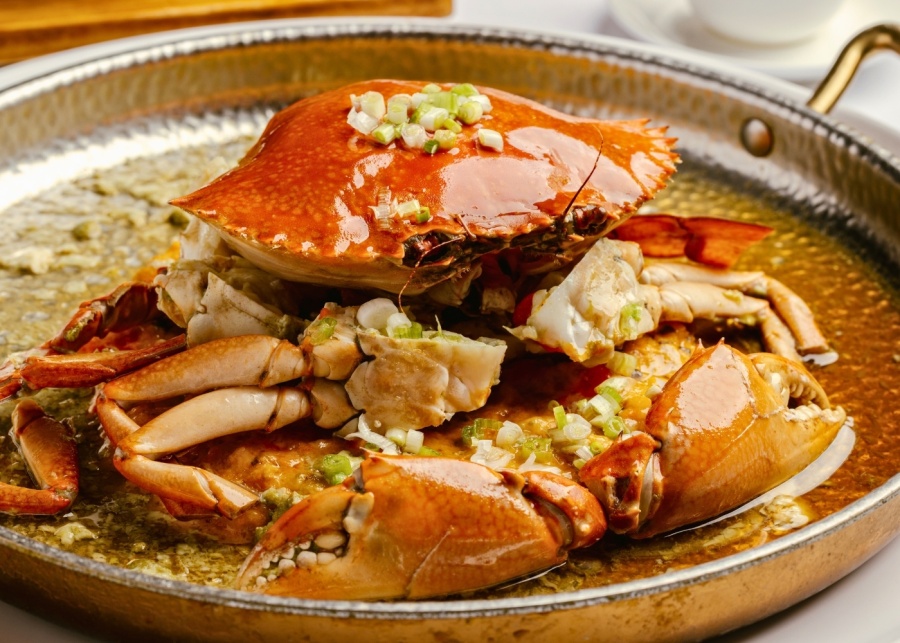
Life as Tanka was tough in many ways, but Chef Fai credits his culinary prowess and love for food to this rocky beginning. “I was mostly left alone when I was young, since my mother and father had to go fishing. But we lived near a lot of relatives, so the kids would play together and an uncle or auntie would look after us,” says Chef Fai. “Tanka would cook in their boats when they return from sea, and I would go around to help, passing ingredients and such – that’s how I learned the ins and outs of Tanka cuisine.”
A labour of love and perseverance: The secret to Kam Tung Kitchen’s success

“All of this is made possible by serving claypot rice,” explains Chef Fai. “We had a modest start, serving rice noodles with roasted goose. Then we came across the concept of night time dim sum, so we started doing that as well. I would close up shop at night,” Chef Fai gestures to Chef Ada with gratitude, “and she would open up for evening dim sum. I always say, if I can work a 10-hour shift, my wife can work a 16-hour shift. We wouldn’t be here if it wasn’t for her.”
“Even though I come from a family of restaurateurs, I was a secretary before I met Fai,” says Ada. “I used to balance work with the restaurant, but when it got overwhelming I decided to quit my job and help out full time.” For Chef Ada, the road to becoming executive chef consisted of a steep learning curve. “I was the oldest among my siblings, so I used to cook a lot when I was growing up. But it was nothing like cooking in a restaurant kitchen. There was a lot I had to learn, and I had to learn fast.”

“The height of the business was when we served claypot rice,” says Chef Ada, then, proudly adding, “No one can make as many pots at once as my husband. We’ve had days where we served hundreds of claypots; one time, the heat from the charcoal grills got so hot, it melted a plastic watch on [Fai’s] wrist.”
“We were lucky to have made quite a bit of money from the claypot rice business, and that’s when we started slowly renovating the restaurant and began rebranding to serve Tanka cuisine,” says Chef Fai.
Innovation and adaptation: A fusion of Tanka and Chiu Chow flavours

“We created most of the dishes on the menu,” explains Chef Fai. “The soul of Tanka cuisine is a combination of the essence of seafood and the essence of meat, and how you elevate the protein with different ingredients and cooking methods.”
Coming from a Chiu Chow family, Chef Ada was able to inject a distinctive flair to various Tanka recipes. “I think Tanka and Chiu Chow cuisines are different but also similar,” explains Chef Ada, “Chiu Chow people of Shantou and Shanwei live near the ocean, and Tanka communities are often found at sea, so seafood is a common thread. Both cuisines have a balance between strong and mild flavours.”
“That’s why I’ve adapted a lot of Chiu Chow recipes to Tanka cooking techniques and flavours. For example the Chiu Chow-style Fish, is traditionally marinated, steamed, and served cold. At Kam Tung Kitchen, we serve it warm.” Marco adds, “The key to both cuisines is to cook an ingredient in a way that brings out its freshness and original flavours.”
An evolving business: The Treasure
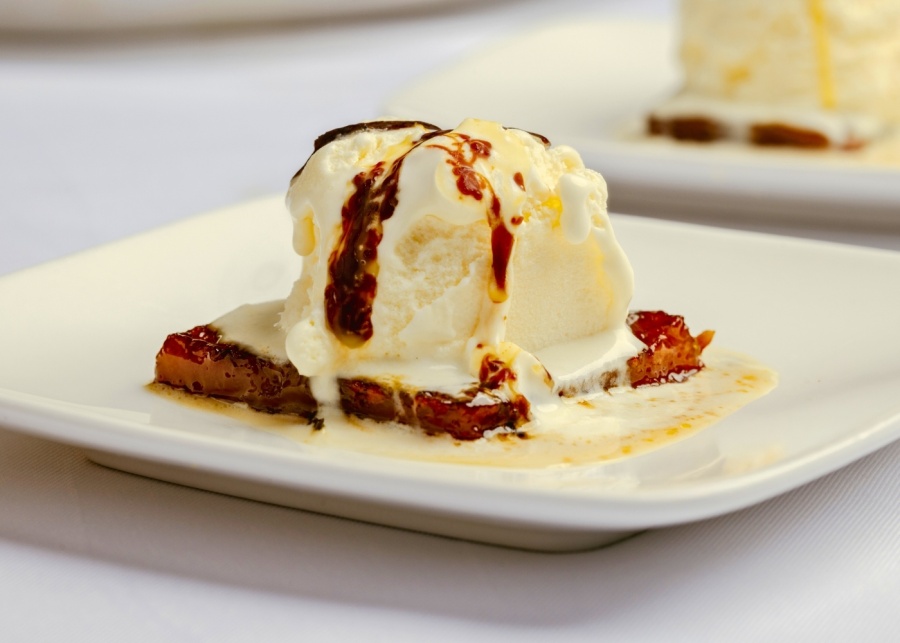
“I grew up in this restaurant and I always liked helping around here,” says Marco, then jokingly added, “I worked a brief stint as a cashier here before being ‘fired’ due to poor performance!” He continues, “After graduating from university, I worked in finance for a while. But one day, I realised my passion for the family restaurant. I wanted to achieve something here before I turned 30, that’s why I came back to help.”
Marco’s passion for his parents’ restaurant is clear from his eagerness to take up any and all tasks that arise, whether it be serving dishes, training staff, or cooking. “My mother always says that knowing how to cook is the most important part of owning a restaurant,” says Marco. “If the owner can’t step up when one of the chefs is off sick or you need more manpower in the kitchen, you lose credit among your staff pretty quickly. That’s why I’ve started learning to cook from my parents.”
One of the main projects Marco has been leading since returning to Kam Tung Kitchen is opening a private kitchen, named The Treasure, on the second floor. “Our upstairs concept follows an omakase format,” explains Marco. “So we can always use the freshest, most in-season ingredients to cook, and present each dish in what we think is the most perfect way.”
A reflection on the 35th milestone
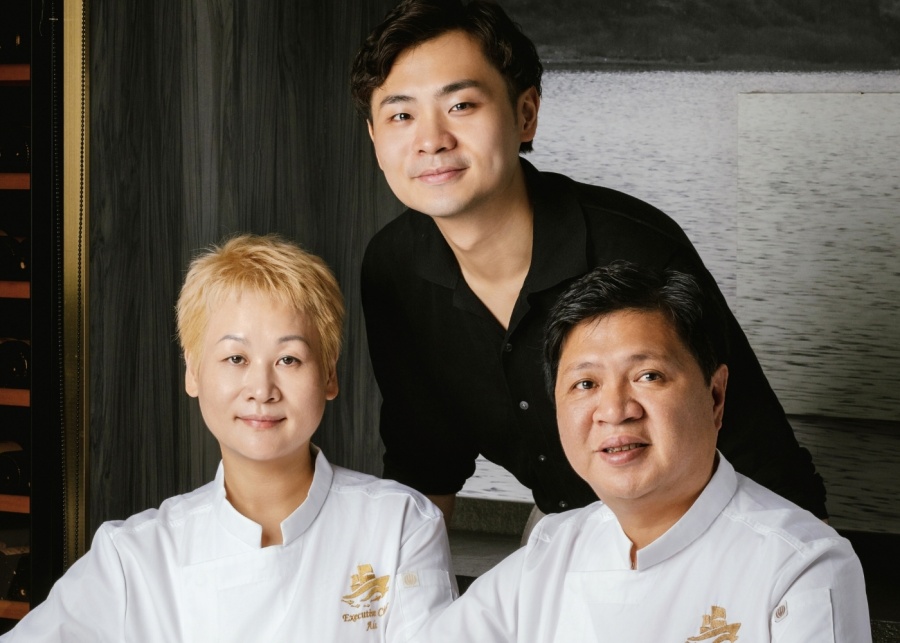
“When we first opened Kam Tung Kitchen,” says Chef Fai. “ A lot of Tanka would bring their fresh catches to the restaurant, asking us to cook them a certain way. We’ve learnt a lot from these collaborative experiences – for example, we know how to best present freshly caught seafood as much as we know how to work with ingredients that’ve been caught for a few days – but we’ve ventured beyond that as well.”
“Over these 35 years, we’ve been through highs and lows. We’ve struggled, but we’ve also had comfortable times. I would say we’re doing okay so far.”
The Pos’ passion for Tanka culture and cuisine is evident in every aspect of their restaurant, from the unique and seasonal menus to the display of Tanka paraphernalia that Marco has collected from his relatives. It is clear to me that Kam Tung Kitchen has always been and will remain a passion project. With Marco and his younger siblings being more hands on with restaurant operations now, I’m excited to see how this Shau Kei Wan gem grows and evolves in the future. Dishes might change, and it might not be the same chefs in the kitchen, but one thing’s for sure: the legacy of Tanka cuisine will live on.
Kam Tung Kitchen and The Treasure
Opening hours: 11am – 11pm everyday (Kam Tung Kitchen); by reservation only (The Treasure)
Address: Shop 5, Eastway Towers Block 3, 59 – 99 Shau Kei Wan Main Street East, Shau Kei Wan, Hong Kong
What other cultural gem should I explore next? DM @honeycombershk on Instagram or drop me an email at celia.lee@thehoneycombers.com.
